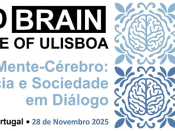Por David Calha (INESC-ID/IST).
As neurons fire, producing action potentials that are recorded using electroencephalography (EEG), blood irrigation, captured with functional magnetic resonance imaging (fMRI), is required to provide molecules and remove the released toxins. Our work maps EEG to fMRI using neural processing principles. With such a mapping, different applications can be explored: assist ambulatory diagnostics of brain diseases; support longitudinal studies via EEG; and increase the discriminative and interpretative power of decision support systems. To this end, we develop a model that surpasses the state-of-the-art in EEG to fMRI synthesis by up to 21% in RMSE. In the end, we show that the model naturally extrapolates to a classification setting, due to its shift invariant properties and spectral inspired mechanics. Using schizophrenia as a proof of concept case, we prove our synthesized view is discriminative (0.77 AUC) and has a good interpretability power over this neuropsychiatric disorder.
Short bio: David has recently obtained his PhD from Instituto Superior Tecnico, University of Lisbon. He is interested in machine learning, neuroscience, and neuroimaging techniques. His main contribution so far was the development of a model that maps electroencephalography to an functional magnetic resonance imaging volume. This type of mapping allows better interpretability in decision making settings at a lower cost.





















